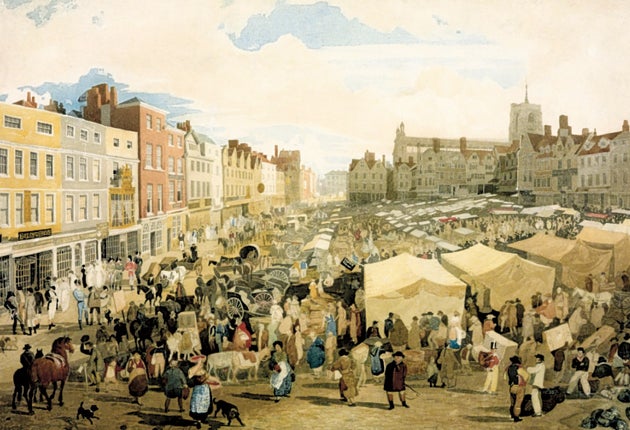Watercolour, Tate Britain, London
Show goes to the art of the solution

Once upon a time watercolour was a fairly lowly utility medium. Used by map-makers and manuscript illuminators, it was deft and quick-drying, capable of capturing something on the wing.
Then, during Elizabeth I's reign, the brilliant miniaturist Nicholas Hilliard upped its status by using it for exquisite portraits of coddled, cream-faced aristocrats. By the 18th century it had become important to botanists and scientists - flowers, birds could be caught, with extreme flashes of brilliant colour, in all their balletic intricacy. Then, at the start of the 19th century, watercolour upped its game again. Various societies were formed to promote its importance.
To a great fanfare, exhibitions of watercolour paintings were staged for the first time. Large-scale watercolours were painted on much grander themes as a direct challenge to the hegemony of oil painting. Watercolourists puffed out their chests. Turner's genius helped: his ceaseless experiments turned everything upside down. Then the Pre-Raphaelites took things further still with their sickly-rich colours, as did Whistler, who opted to use watercolour more thinly, moodily and atmospherically.
This exhibition thunders through the entire subject of watercolour, its history and its use, at a cracking pace. Many of the exhibits are small, they're on the walls and in vitrines, and often cheek by jowl. In part, the entire exhibition feels like an appealing exercise in pedagogy. It not only shows us how watercolour was used and developed but draws us in to a consideration of all the technical aspects too: how it changed down the centuries with ever-shifting technologies and the changing aspirations of watercolour painters; what papers and paints were used. An entire gallery is devoted to all this, between the sections devoted to watercolour in the 19th and 20th centuries. We get snatched histories of Reeves and Rowney. We admire half-squeezed-out tubes of paint, dirty old brushes, palettes. We thrill to the exciting portablity of it all. We are shown Turner in some detail, and what he carried with him when he painted – his beaten up metal paint box, his brushes. All very dirty-hands-on, you might say. All designed to appeal not just to critical connoisseurs but painters too.
In front of a gloriously moody Cotman of the South Downs, heavy, vivid, evening blues coming on, the Downs swelling and tawny, a woman stands beside me with her Graduate Sketchbook, drawing like one possessed, going after his manner.
Then we consider watercolour in the 20th century and now – its usefulness, again, in capturing scenes with great rapidity: the horrifying wounds of soldiers during the Great War. Some of the finest works here are little seen pieces by Edward Burra, like a large-scale scene of soldiers at Rye in 1941, looking so weird, bloated, demonic. Then there are the strangely alluring symbolic dreamscapes of David Jones, who mixed pencil and ink with watercolour to brilliant effect. Yes, watercolour can pack a punch.
To 21 August (020 7887 8888)
Join our commenting forum
Join thought-provoking conversations, follow other Independent readers and see their replies
Comments
Bookmark popover
Removed from bookmarks